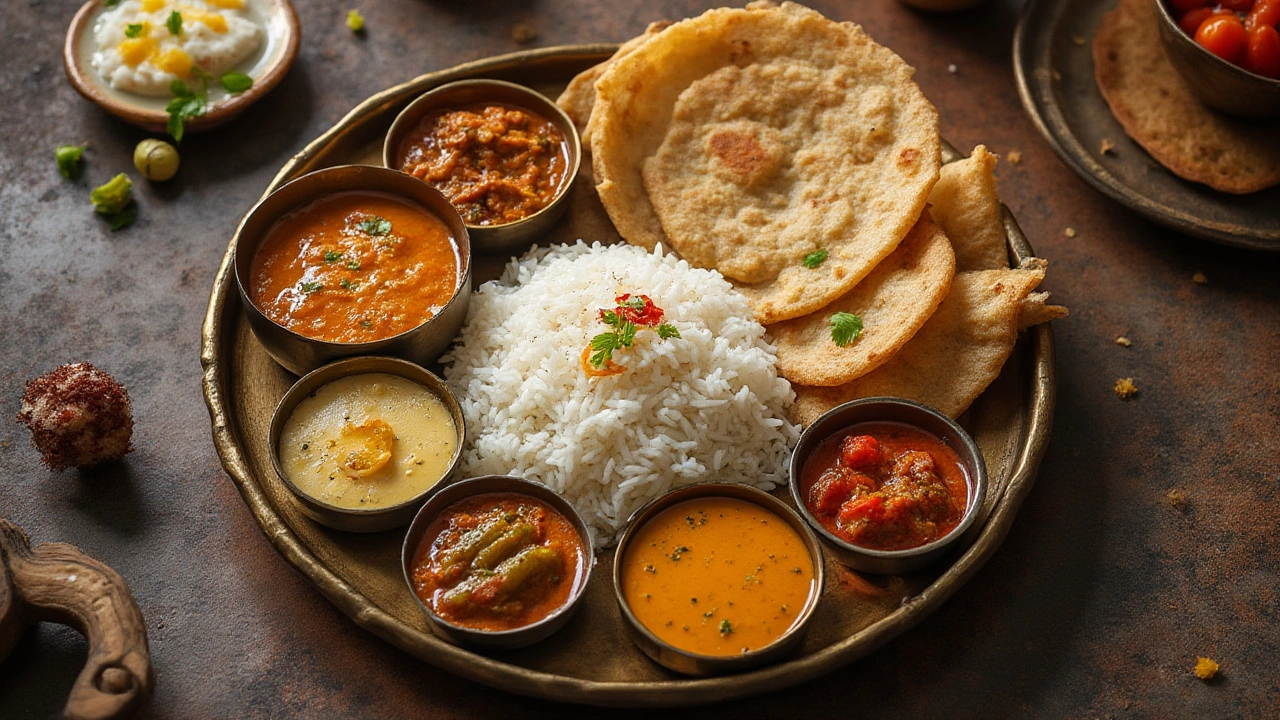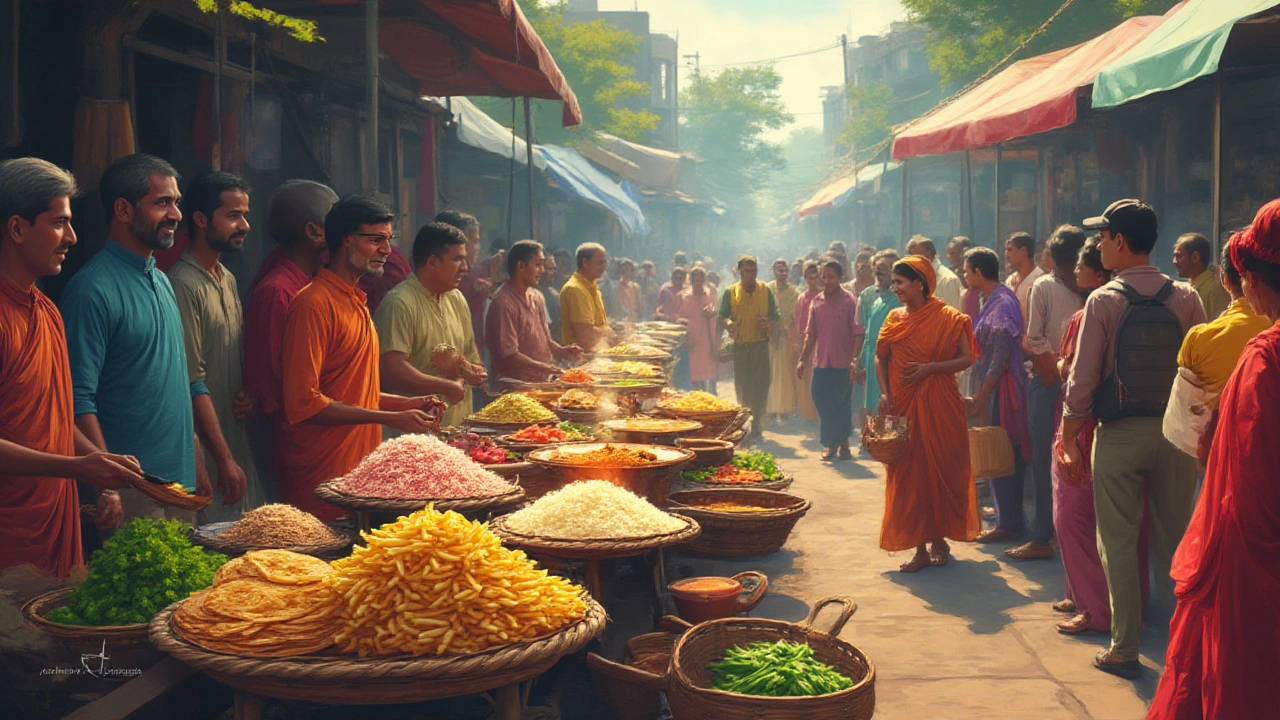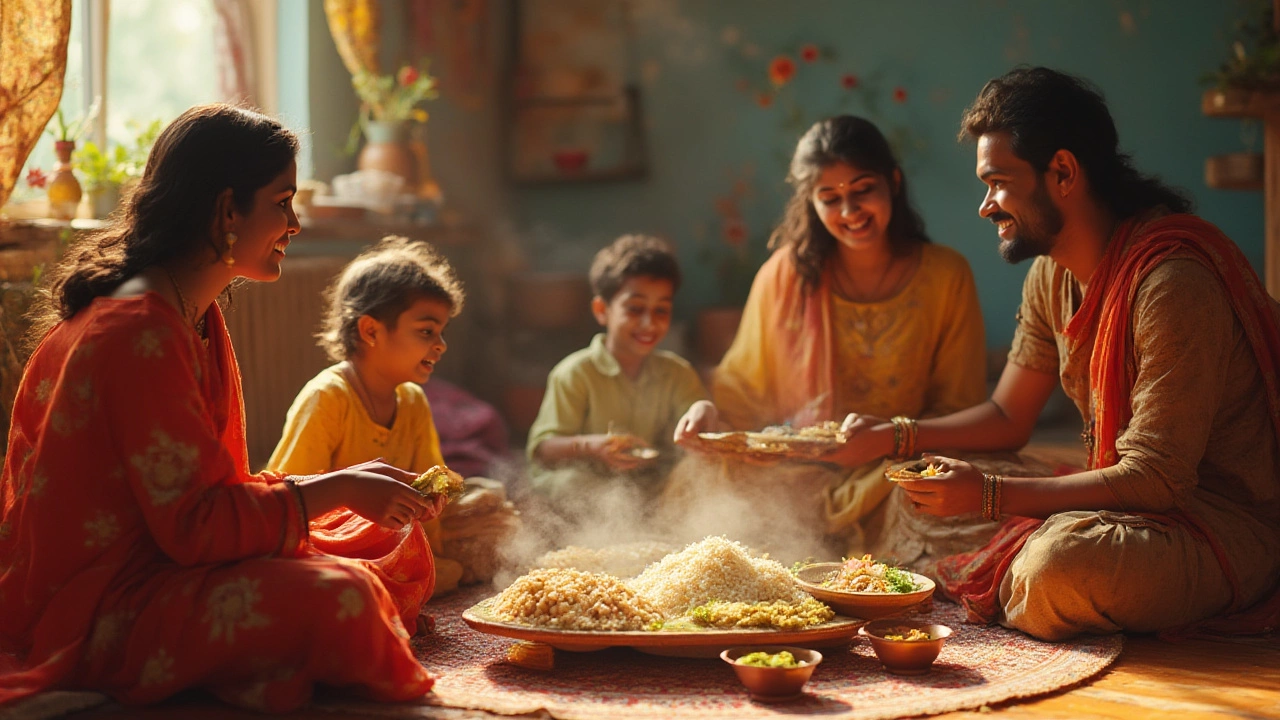Imagine stepping into a road-side eatery in Mumbai or a family kitchen in rural Odisha. You sit down, and before the spicy curries or sweet desserts arrive, there’s always one thing waiting for you. It’s the unsung hero of Indian cuisine—something so basic yet so boundless that no dinner table, wedding, or street corner food stall is ever without it.
The Real Star of Indian Meals: Is It Rice or Roti?
When it comes to Indian food, the first flavors that dance in your mind might be spicy curries, mango lassi, or a fiery bowl of biryani. But ask anyone who’s grown up here, and they’ll tell you: the answer is as basic as it gets. It’s either rice or roti—sometimes both, but never neither! These staples have fueled India for centuries, cutting across caste and class, city and village, festival and routine day.
Here’s the thing—India’s geography and culture split the preferred staple almost neatly by the map. In the north and west, you’ll see folks tearing off fluffy, soft rounds of roti (or its cousins, chapati and paratha), made from wheat flour. In the south, east, and northeast, you’ll find steaming mounds of rice stealing the scene. According to the National Sample Survey Office (NSSO), wheat and rice account for over 60% of cereal consumption. Rice edges ahead nationwide, eaten by more than half the population at every meal. But walk into any home in Punjab, Rajasthan, or Gujarat—the roti is king.
The funny thing? In a single city like Mumbai, you can see both sides at the same dinner table—one person with rice, the other with rotis, both scooping up dal. Some households decide to have them together, especially if they’re expecting guests or celebrating. It’s like having both bread and potatoes with your Western-style stew. You can’t go wrong, and no one complains.
Rice: India’s Unquestioned Staple in Numbers and Culture
Rice is everywhere in India—think millions of acres of paddy fields swaying under the monsoon sky. India produces more than 120 million tonnes of rice each year, making it the largest rice exporter and the second-largest consumer after China. Every region has its favorite variety: fragrant Basmati from the north; sticky, short-grain rice down south; aromatic Gobindobhog in Bengal—each bringing something unique to the table.
Here’s a snapshot to show just how much rice dominates daily eating:
| Region | Rice Consumption (per capita, per annum, kg) |
|---|---|
| West Bengal | 153 |
| Kerala | 109 |
| Tamil Nadu | 96 |
| Punjab | 67 |
| Maharashtra | 65 |
Rice isn’t just about white fluffy grains on a thali plate. Think dosa, idli, pongal, appam (all made from rice batter). These are breakfast, lunch, and dinner staples especially in southern India. At temple festivals, entire meals—sometimes serving thousands—are centered on rice and its forms. Even sacred offerings, known as prasad, often come in the form of sweet rice puddings like kheer.
In the northeast, rice even takes center stage in their drinks, like apong (a rice beer), and snacks, including puffed rice. No matter where you are, rice is always lurking behind the main dish, either as a hero or a trusty sidekick.

Roti, Chapati & Paratha: The Wheat Powerhouses
Slice into any North Indian home around noon and you’ll find the smacking sound of wheat dough being patted flat, dusted with flour, and cooked on hot tawas (griddles). Roti isn’t fancy. It’s a round, simple bread—soft, warm, ready to scoop up thick dal or spicy vegetables.
Wheat farms carpet much of North India, making this crop, and its offshoots, ridiculously accessible and cheap. Data from the Ministry of Agriculture puts India as the world’s second-largest wheat producer. The NSSO data says about 90% of North India’s rural population eats roti at least twice a day. Punjab and Haryana—known as the ‘breadbasket’ states—even serve rotis with a battered dollop of yellow butter or jaggery.
Beyond roti, you’ve got variations. Chapati is pretty much the same thing but thinner. Paratha is layered, stuffed with everything from mashed potatoes to shredded radish. There’s also puri (deep-fried and fluffy), phulka (puffed up on open flame)—the list keeps growing. And here’s a secret: nothing cures homesickness for thousands of Indians abroad quite like the smell of fresh roti on the pan.
Interestingly, the rise of roti has even changed how people plan their meals abroad. In Canada and the UK, for example, whole aisles in grocery stores now offer ready-made rotis and wheat flour labeled “atta.” That’s a little glimpse into how this food has traveled beyond just India’s borders.
The Science of Everyday Eating: Why Rice and Roti Dominate
You might wonder—why are people obsessed with such basic food? There’s actually smart logic behind it. Rice and wheat are awesome energy sources. They’re packed with carbohydrates, which is just what you need when you’re working outdoors, cycling through crowded city streets, or marching up and down stairs to catch that late-night train.
This matters especially because Indian meals are nearly always balanced with lentils (dal), vegetables, and, yes, a generous helping of spices. The plainness of rice and roti lets the other flavors shine, but they also soak up the curry gravy and make spicy food a little less fiery. Think of them as culinary peacekeepers—cool heads in a plate of chaos.
From a nutrition perspective, wheat and rice both have their positives. Rice digests a bit quicker, providing fast energy, which is perfect for long, humid days. Roti is slower to break down because of the fiber, giving you steady energy over hours. Households with diabetics might be told to swap white rice for “brown” versions or stick to more rotis, just for their impact on blood sugar.
Across generations, these foods have acted as equalizers too. In rural India, where money is tight, a simple meal of rice gruel (kanji) with salt and pickle can keep hunger at bay for hours. At fancy weddings, a buffet can stretch for meters—with thirty curries, but always a dedicated roti stall and rice counter. Even modern restaurants lean on these classics, offering creative takes such as black rice biryani or multigrain parathas for discerning urbanites.

Regional Twists, Surprising Facts, and How to Try Them All
If you’re hungry for trivia, here’s a fun one: India grows more than 6,000 varieties of rice and hundreds of types of wheat—each with a devoted local following. Assamese kitchens use Joha rice for their gentle curries; the north loves Basmati for its aroma. Down in Tamil Nadu, rice goes from plain to puffed, flaked, ground, or even fermented for dosas. And the same wheat that makes roti in Punjab might become bhakri in Maharashtra or luchi (a deep-fried treat) in Bengal.
Curious about trying these at home? Here are a few tips:
- Rice: Experiment with Basmati for biryanis or plain steamed with curry, try short-grain rice for more starchy, chewy dishes, or look for red rice (grows in many hill states) for a heartier option.
- Roti/Chapati: If you’re new to Indian cooking, pick up “whole wheat atta” from an Indian store. Add a tiny bit of oil to your dough for softer breads. Rest your dough for 15-30 minutes—it makes a difference.
- Stuffed Paratha: Mash up whatever you like (potato, paneer, lentils, even leftover chicken curry), roll it into dough, and fry with a touch of ghee.
- Get creative: Try leftover rice stir-fried with veggies for a simple meal, or turn day-old rotis into chips or wraps.
Maybe the most beautiful part of Indian eating is how both rice and roti travel from table to table, always paired with something delicious. Every state, every city, and almost every family puts its own spin on these classics. Yet, when you travel from one coast to another, you’ll notice something—no conversation, no occasion is ever too big or too small to gather around a humble plate of rice or a stack of rotis. These are the quiet stars—the most eaten things in India. Grab a bite, and you’re instantly a part of a tradition as old as the country itself.
